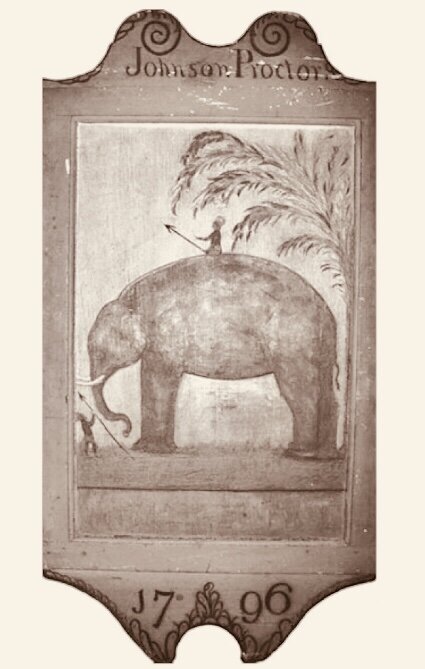1667-1824
The Proctor family purchases farmland north of Boston and operates the Proctor Inn & Tavern at modern day 348 Lowell Street in Peabody, Massachusetts. At this site, Captain Johnson Proctor, a Revolutionary War Veteran, cultivates the “Proctor Harvey” apple varietal. He also designs a custom-built gravity driven milling process to extract cider in the early 1800’s.
1825-1852
The collapse of the New England cider industry in the 1820’s devalues the Proctor family orchards. Captain Proctor’s son, Abel, begins tanning leather in the vicinity of Proctor’s Brook. He is soon joined by his son, Thomas Emerson Proctor, in forming the Abel Proctor & Son leather concern. From an early age, Thomas Proctor demonstrates high business acumen and helps innovate the tanning process. The business expands to several New England states.
1853-1892
The Proctors aquire property and tanneries in Upstate New York and Pennsylvania to help supply boots, saddles and other leather goods to the Union Army during the Civil War. Thomas Proctor eventually takes over the business in its entirety renaming it the Thomas E. Proctor Leather Company. Including the town of Proctor, PA, the company builds roads, railroads, churches, schools and factories throughout Pennsylvania’s “Endless Mountains” region. By linking these tanneries to its warehouses and storefronts in Boston’s “Leather District”, the company eventually grows to be the largest such enterprise in the United States.
1893-1895
Mr. Proctor spearheads the effort to consolidate the regional “tanning families” into an original Dow 30 stock listing, The United States Leather Company. Along with the Proctors, many of the other tanning families preserved their ownership in the subsurface rights underlying the properties sold to the new company. After being named USLC’s first president, Mr. Proctor passes away suddenly, leaving his heirs to manage the Proctor subsurface estate.
1896-1949
As traditional leather tanning processes become obsolete, Proctor’s heirs shift focus from leather tanning to real estate and energy asset management. In Boston, the family builds the iconic “Proctor Building” at 28 Kingston St. in honor of Mr. Proctor. In Pennsylvania, several Proctor mines begin operation in Lycoming, Bradford and Sullivan Counties.
1950-1980
The Proctors phase out mining activity, focusing instead on natural gas development. Charles G. Rice II, Mr. Proctor’s great-grandson, is nominated to manage this new venture. Natural gas discoveries near Proctor lands results in a lease with Exxon for the family’s entire Pennsylvania estate. The Thomas E. Proctor Heirs Trust is created to manage these efforts going forward. Specific holdings in this new Trust are converted into charitable entities such as the Mattina Proctor Foundation.
1981-Present
Activity on the Proctor lands increases with the discovery of several “shale gas” fields. Due to this increased attention, several outside parties attempt to claim retroactive ownership of the Proctor lands. The Thomas E. Proctor Heirs Trust focuses on defending the family interests from these new claims.






